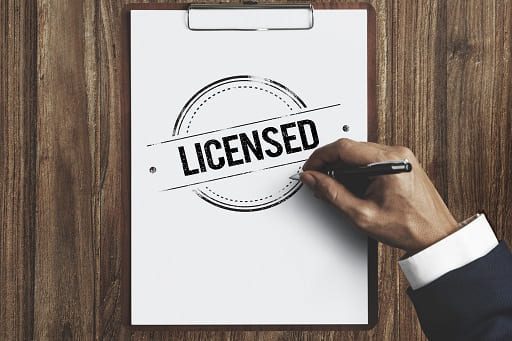5 Steps to Building an Effective Asset Management Plan and Asset Planning
If you’re like most marketers, you understand the importance of having an asset management plan. But what does it take to create an effective one? Here are five steps to get you started on the right foot.
- Know Your Assets:
- Set Goals:
- Develop a Strategy:
- Implement the Plan:
- Monitor and Adjust:
By following these steps, you can develop an effective asset management plan that will help ensure your marketing efforts are successful now and in the future!
1. Determine your assets
No matter how large or small your business is, taking the time to understand fixed asset valuation can be an invaluable tool for success. Knowing what tangible assets you’ve got in your corner—like inventory, property, and equipment—will help you better manage their cash-generating potential, whether that means shifting ownership to benefit from tax advantages or liquidating them for additional capital. It’s easy to get overwhelmed when diving into fixed asset valuation for the first time, but no matter where you are starting from, taking stock of your fixed assets and mastering their value is a surefire way to secure a profitable bottom line.
Determine the value of your assets
Knowing what your fixed assets are worth can be a tricky business—if you don’t stay on top of keeping track and figuring out their value, it can make all the difference in your financial success! Setting aside some time to determine the value of your fixed assets is an investment in yourself that could save you time and headaches down the road. Whether you’re looking to take out a loan or just want to check in on the net worth of your business, fixed asset valuation is an essential step to staying healthy financially. Put yourself first by crunching the numbers—you deserve to know what you have!
2. Set Goals
Goal setting can seem overwhelming at first, but it shouldn’t be! A great way to start is by assessing fixed asset valuations and then breaking them down into smaller goals. This can help you reach your goal quickly, with a sense of achievable progress along the way – after all, if you focus on small wins instead of one large overarching goal, achieving success will become much more enjoyable!
Understand how to properly maintain your assets
Maintaining your fixed asset portfolio is not complicated, but it is necessary if you want to keep up with fixed asset valuation and accurately report profits or losses. If you go about this strategically for each fixed asset, with regular maintenance and upkeep, then you can maximize the value of all your fixed assets. We all know our stuff is more valuable when it’s kept in better condition! This applies not just to physical items, but also intellectual property too – it takes effort to keep these profitable and well-kept. With proper maintenance of your hard work, it will pay off.
3. Develop a Strategy
Developing a fixed asset valuation strategy doesn’t have to be a boring endeavor – it can actually be quite fun! First, do some research on the industry and the latest methods of fixed asset valuation, so that you know what the playing field looks like. Then, develop specific goals and milestones to meet them. Dive into understanding fixed assets in different contexts and determine how they’re valued. Finally, take time to ensure you are focusing on the right variables when completing your fixed asset valuation strategy. Take it one step at a time and before you know it, you’ll have an effective fixed asset valuation strategy that not only meets your needs but will help your business grow!
Develop a plan to manage your assets effectively
Managing your assets is essential nowadays and it can be made infinitely simpler with a well-planned strategy. In order to ensure maximum effectiveness, fixed asset valuation should be used to accurately determine their value. From here, you can create a systematic list that includes all of the assets you need to manage. Assign specific duties regarding maintenance and upkeep in order to maximize efficiency. You can even assign financial targets that are achievable over fixed periods of time for further control over your assets. With the right plan in action, you will be able to bring harmony and control into your asset management.
4. Implement the Plan
When it’s time to implement the plan, there’s only one way to go – full steam ahead! Now is the time to really take stock in fixed asset valuation, analyze data and assess whether or not the plan will be attainable. With enough effort and hard work, anything can be done. Put on your best planning hat and attack the challenge on all cylinders. Success is within reach – it’s up to you now! So let’s get down to business and make sure the plan comes together perfectly.
5. Monitor and Adjust
Monitor and adjust your fixed asset valuation regularly to ensure accurate tracking of your business’s performance. Not only will this help keep you in compliance with regulatory agencies, but it also helps you stay on top of fixed asset turnover. Being able to identify inefficiently used fixed assets puts you in a better position to take advantage of opportunities for improvement. A little playful attention to fixed asset valuation yields big rewards!
Review and update your asset management plan regularly
Managing fixed assets is like looking after a houseplant- it can be easy to forget about, but if you don’t make sure it’s watered regularly then eventually it’ll suffer! That’s why regular reviews and updates to your asset management plan are so important: fixed asset valuation – like any plant that needs water – will only reach its highest potential if you keep an eye on it. That way, your fixed assets can help drive compliance, financial performance, and success, instead of leaving you feeling wilted. Don’t let those fixed assets become a chore; be proactive and review frequently to guarantee everyone in your organization reaps the rewards!
So there you have it! If you follow these five steps, you’ll be on your way to managing your assets like a pro. Determining what assets you have is the first step in starting up your business. After that, set realistic goals for yourself and develop a strategy to achieve them. Implementation and adjustment are important parts of the process too! If this blog helped get your gears turning, make sure to keep reading our content for more advice on setting up a shop.
Need to Request or Submit Information?
Related Posts

How an IP Licensing Agreement with TAAL Will Benefit nChain’s Blockchain-Related Patents

How IP Licensing Deals Ensure Mental Health Startups Like Lantern Thrive
About Us

